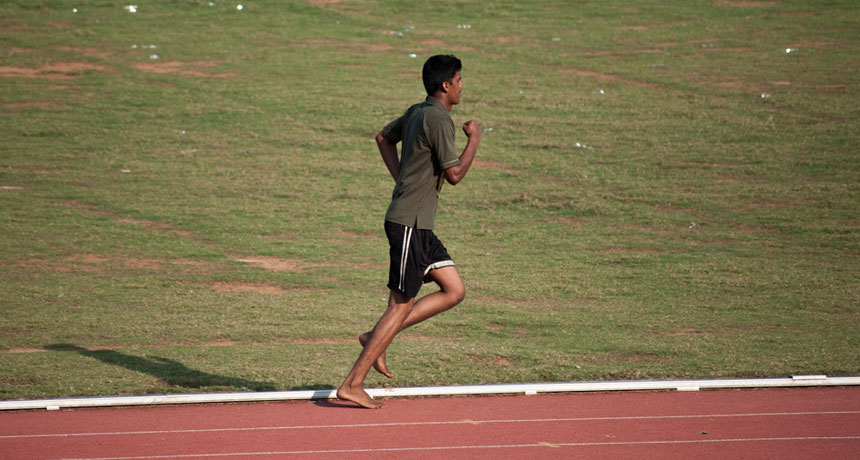Questions for ‘Cool Jobs: Researchers on the Run’

Research by Davis has tested the role of shoes, and running shoeless, on the feet.
karmadude/Flickr (CC-BY-SA 2.0)
Share this:
- Share via email (Opens in new window) Email
- Click to share on Facebook (Opens in new window) Facebook
- Click to share on X (Opens in new window) X
- Click to share on Pinterest (Opens in new window) Pinterest
- Click to share on Reddit (Opens in new window) Reddit
- Share to Google Classroom (Opens in new window) Google Classroom
- Click to print (Opens in new window) Print
To accompany feature “Cool Jobs: Researchers on the Run”
SCIENCE
Before reading
1. What happens to your body when you run? What muscles do you use? Don’t forget about organs such as your heart and lungs?
2. Scientists often use animals as a stand-in for humans in research. Why is this possible? How can a mouse or lizard be similar to a human? In what important ways are they different?
During reading
1. Why are scientists studying the science of running?
2. What are green anoles?
3. How do the researchers in Husak’s lab increase the difficulty level for his lizard runners?
4. What happens to the lizard immune systems when the animal is running?
5. Describe three ways that Spaulding and her colleagues measure human movement in the lab.
6. Why does Spaulding run in bare feet?
7. Where are Loerch’s runners?
8. Why is it important for astronauts to exercise while in space?
9. Describe two ways that astronauts can exercise on the International Space Station.
After reading
1. Astronauts traveling to Mars will need exercise equipment that is small, that is lightweight and that keeps people from getting too bored. Pick one of the three pieces of exercise equipment on the International Space Station. Brainstorm three ways that it might be altered to make it work on a trip to Mars.
2. Husak uses green anoles as a stand-in for human runners in his research. What other animals might also work as human stand-ins in this type of research? Explain your answer.
MATH
1. Astronaut Sunita Williams ran a marathon on the International Space Station, completing the 42-kilometer (26.2-mile) race in 4 hours, 24 minutes. On average, how fast did she run? Show your calculations.
2. How long would it take a green anole to run the same distance? Again, show your calculations.